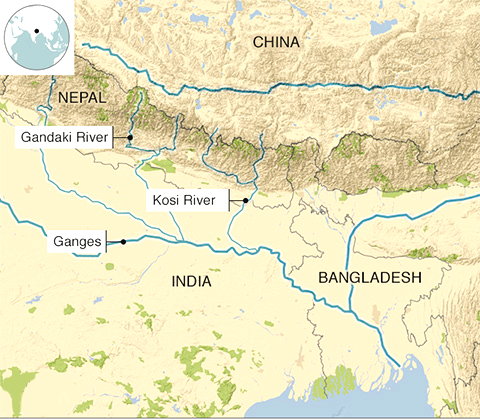Bihar
Bihar Floods Recognised as National Priority
- 25 Jul 2024
- 2 min read
Why in News?
Recently, The Union Budget 2024 allocated Rs 11,500 crore for harnessing and utilizing the waters of Kosi - a river that is known to be highly unpredictable and prone to shifting its course.
- The Kosi river is referred to as the "sorrow of Bihar" due to the widespread destruction it causes across a large area in the northern part of the state after flowing in from Nepal.
Key Points
- According to the sources, it was the first time the problem of floods in Bihar was recognized as a national priority.
- The state received significant benefits despite not obtaining special category status, including four expressways, a two-lane bridge over the Ganga, a power plant, airports, and medical colleges.
- Additionally, the Budget announced an industrial node in Gaya, sports infrastructure, and assistance for accessing funds from multilateral institutions.
- Development plans for the Vishnupad and Mahabodhi temple corridors in Gaya, as well as Rajgir and Nalanda, were also highlighted.
Kosi River System
- The Kosi is a trans-boundary river which flows through Tibet, Nepal and India.
- It has its source in Tibet that includes the world's highest upland, it then drains a large part of Nepal before emerging onto the Gangetic plains.
- Its three major tributaries, the Sun Kosi, Arun and Tamur meet at one point just upstream of a 10 km gorge cut through the Himalayan foothills.
- The river crosses into northern Bihar where it branches into distributaries before joining the Ganges near Kursela in Katihar district.
- The Kosi carries the maximum amount of silt and sand after the Brahmaputra in India.
- It is also known as the “Sorrow of Bihar” as the annual floods affect about 21,000 sq. km. of fertile agricultural lands thereby disturbing the rural economy.






